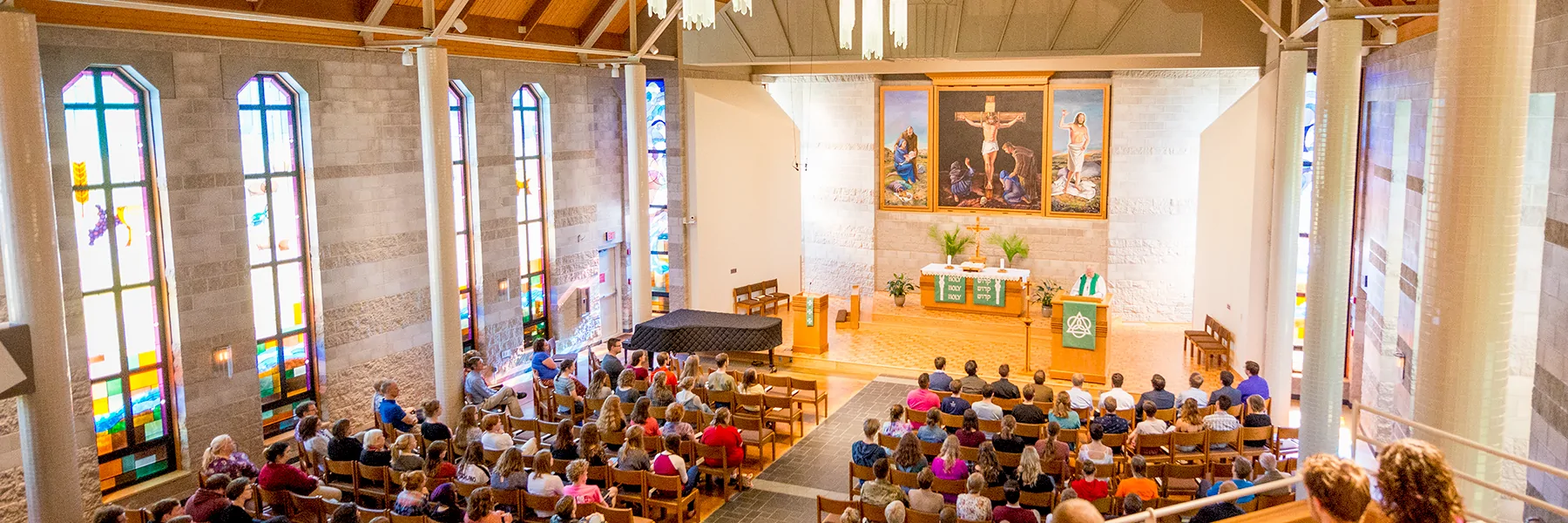Listen
Complete Service
Order of Service
HYMNS AND HYMNWRITERS OF CHRISTMAS
Ambrose — Italy
Veni Redemptor Gentium Savior of the Nations, Come
St. Ambrose (ca. 340-397) is called the "Father of Christian Hymnody." He lived in the ancient Roman city that is now Milan, Italy. He wrote Latin hymns in rhyming pattern to teach the eternal truths of the Christian faith. This is one of the hymns sung most around the world during Advent. Our English version come through the German version of text and tune by Martin Luther. Latin hymns continued to be written for centuries, such as O Come, O Come, Emmanuel (13th century) and O Come, All Ye Faithful (1700s).
Luther — Germany
Vom Himmel hoch da komm' ich her From Heaven Above
Martin Luther (1483-1546) restored congregational hymn singing to being a central part of Christian worship. Luther wrote this hymn for his children to celebrate the birth of Christ. The first setting is by Michael Praetorius, one of the first Lutheran church musicians. The second setting is by J. S. Bach, the most famous Lutheran church musician.
Please sing ELH 123: 1-2 and 124: 13 and 15.
Traditional — France
Les Anges Dans Nos Campagnes Angels, We Have Heard on High
The distinction between a carol and a hymn is not clear. Many carols have unknown origins. This French carol (1700s?) includes a Latin refrain, the song of the angels: Glory to God in the highest.
Please sing ELH 116: 1 and 3.
Brorson — Denmark and Norway
Her kommer dine arme små Thy Little Ones, Dear Lord, are We
On the festivals of Christmas, Easter, and Pentecost, there is also a Scandinavian custom of standing and singing a festival hymn (e.g., ELH 142) before the sermon text, usually the gospel, is read from the pulpit. The Danish hymnwriter Brorson (1694-1764) is called the Singer of Christmas. Denmark and Norway have special "Christmas tree festivals" for children. In Norway it is customary to walk around the Christmas tree while singing hymns and carols.
Please sing ELH 144: 1, 3, 6, 7.
Traditional — England
God Rest You Merry, Gentlemen
For a long time, the Church of England did not allow singing of hymns, but only metrical psalms. Hymns made their way into the Church of England in the 1700s and 1800s. As English speakers, we share many favorite hymns and carols from the traditions of the British Isles.
Please sing ELH 126: 1, 4.
Anonymous — USA
Away in a Manger
Christmas was not celebrated in early colonial America. It was considered too worldly by some early English settlers, including the Pilgrims. Christmas celebrations were illegal in Boston in the mid 1600s. Christmas celebrations became more common with later immigrant groups, gaining more acceptance in the 1800s, with Christmas Day being declared a federal holiday in 1885. Away in a manger is sometimes wrongly attributed to Martin Luther, but almost certainly is an American carol, written in English.
There are various tunes associated with this text.
Please sing ELH 119: 1, 3.
"Christmas at Bethany"
O Rejoice, ye Christians, Loudly
Sometimes traditions are local and "new." The Christmas at Bethany concerts have the tradition of closing with this hymn. Other hymns that have become cherished especially to the Bethany community are: On Mary, Virgin Undefiled and I Stand Beside Thy Manger Here.

